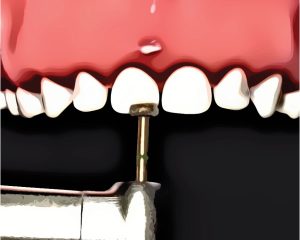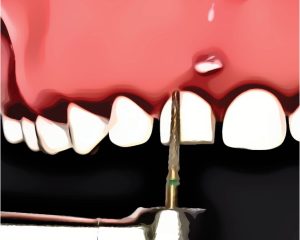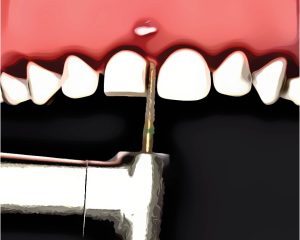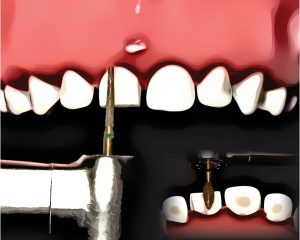Pre-veneered Technique
KINDER KROWNS
PRE-VENEERED
TECHNIQUE
GUIDE


1. CROWN SIZE SELECTION
Begin your preparation by first selecting the crown size that best fits the tooth. This is done by holding a crown up to their existing tooth. Alternatively, if you have a digital x-ray system, you may pre-size the crown by taking measurements in your software and match your patients interproximal width to the corresponding crown size. Your Kinder Krowns® kit box has a sizing chart located on the internal aspect of the lid.
2. Incisal Reduction
For your incisal reduction, we recommend using a coarse grit wheel diamond bur (1.2mm). However, bur selection depends completely on your preference. Reduce the incisal surface of the tooth approximately 1 - 1.5mm.



3. Facial-Lingual Reduction
Reduce facial-lingually approximately 1-1.5 mm using a flame-shaped diamond bur. During buccal-lingual reduction, keep the bur parallel to the tooth. Keeping the bur parallel to the tooth ensures consistent reduction from the incisal down to the gingival tissue.
4. Mesial-Distal Reduction
Next reduce interproximally 1mm using a flame-shaped diamond bur, such as a .368 or a .330 tapered carbide. During interproximal reduction, keep the bur parallel to the tooth and remain supragingival. This technique will reduce the likelihood of contacting the pulp.


5. Feather Margins
Using a flame-shaped diamond bur reduce subgingivally 1-2mm, ending with a feathered margin. Often there is a remaining band of tooth structure, just below the tissue - removing that tooth structure is the key to achieving a passive fit.
6. Trial Fitting
The most important key to remember when placing Pre-veneered Kinder Krowns® is that a passive fit is required. Kinder Krowns® are a composite faced SSC and if the SSC flexes, it may cause the facial to crack or delaminate. If the crown won’t go into place without resistance, you will need to reduce more tooth structure. The appropriately sized crown will seat passively and subgingivally 1-2 mm and should not alter the gingival tissue.


7. Cementation
After the preparation is complete and all of the crowns fit passively, the crowns can be filled with your cement of choice. Many dentists are using a straight-glass ionomer, however a resin-modified glass ionomer is certainly adequate.

